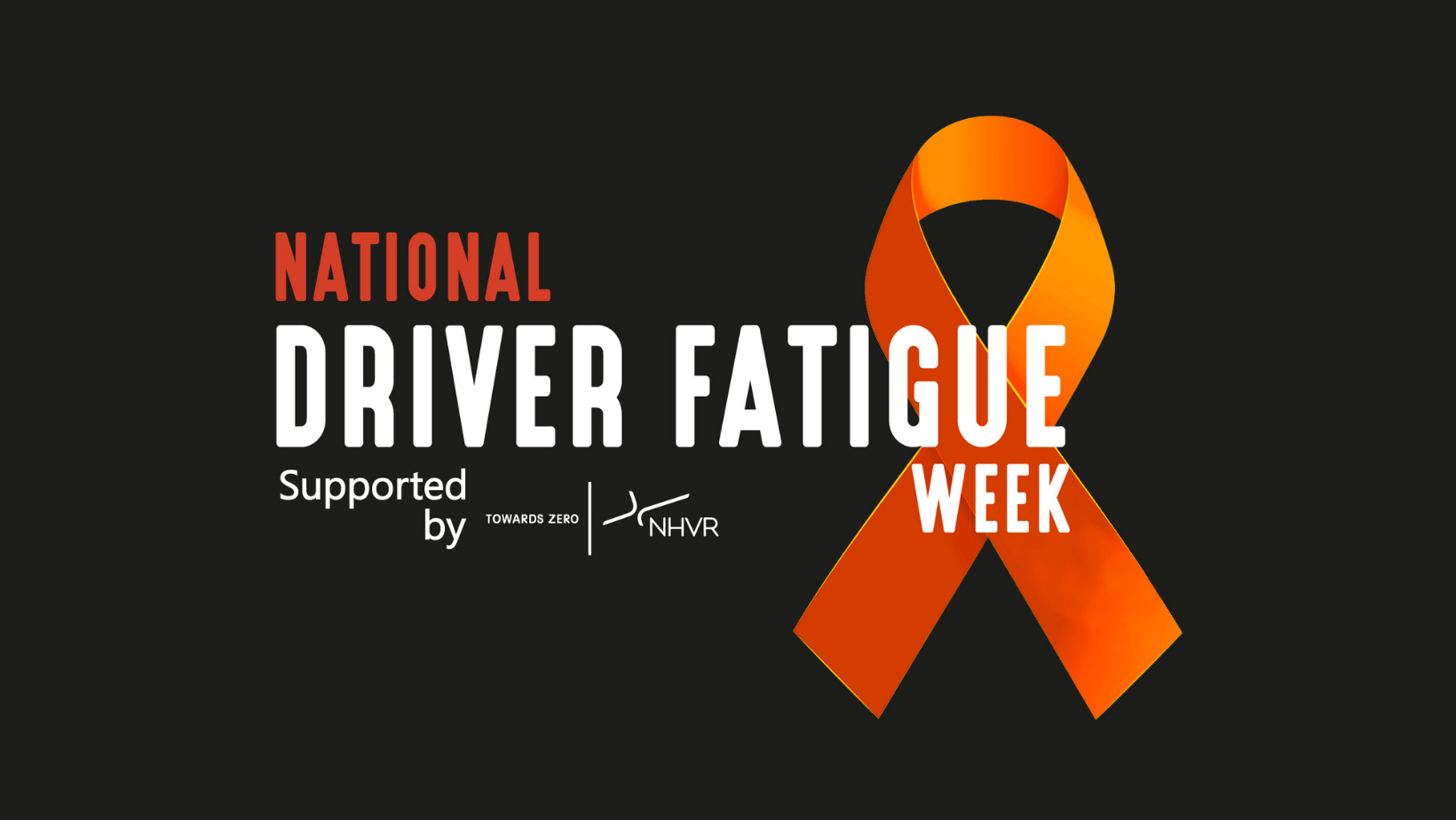Statistics indicate that driver fatigue management is a serious consideration for all fleet managers.
Why Do Fleets Need Driver Fatigue Management?
The Transport Accident Commission of Victoria outlines that fatigue is a major cause of crashes in Victoria, resulting in approximately 50 deaths and 300 serious injuries per year. The situation depicts a driver falling asleep at the wheel for as little as 4 seconds while travelling at 100km/hr. The vehicle will then potentially travel a further 111 meters without driver control.
Despite the varying national statistics, driver fatigue is a major cause of road fatalities and serious injuries nationwide. Haworth and Rechnitzer (1993) elucidate the coronial and police citations, in which fatigue occurred in about 5% of all crashes, even in its narrowest of descriptions. The current update by the Australian Transport Council, now the Standing Council on Transport and Infrastructure, details that the figure has gone up by 30%, particularly when road traffic accidents are related to an impaired concentration.
Facts About Driver Fatigue
Let us reiterate that fatigue impairs cognitive performance, and in that lies the inherent risk. As a Fleet Manager responsible for Driver Risk Management, you should already know that impaired judgement can lead to fatality and injury. So the following scenarios outline how you can manage the risks:
• Driving at night puts anyone at higher risk of accidents, especially caused by fatigue. Part of driver fatigue management should address such increased risk with a clear and easy-to-follow fleet driver management approach to night-time shift driving;
• Remote areas, too, increase the risks of accidents caused by fatigue. The factors range from higher speed restrictions in rural areas to fewer requirements for evasive action, particularly to jog the attention when things go awry;
• Driving alone serves a greater risk. The driver’s good health and preparation for safety measures can help combat and minimise erroneous turns;
• Driving in commercial vehicles puts the driver at greater risk of fatigue. As a way to mitigate the risk, mobile workforce management must be considered, especially with truck fleets and delivery services; and
• Further risk factors such as driving after taking medication, en route to or coming home from a social event, and driving during holiday periods such as Christmas and other festivities must also receive consideration for effective management.
Commercial Driver Fatigue Management
A more definitive design of what driver fatigue management entails would include the responsibility for commercial management too. In Australian law, although there is no established set of laws legislated to regulate driver fatigue yet, driver fatigue is already taken seriously. Evidently, at the end of the day, the concerns for heavy vehicle driver fatigue management and commercial motor vehicle (CMV) fatigue convey that it’s not just about a matter of ethics and person-to-person responsibility.
Heavy Vehicle Driver Fatigue Management – Driver Safety & Australian Law
There are three options to manage driver fatigue as according to the Heavy Vehicle National Law (HVNL) sets for fleet-operating businesses and they are:
Standard Hours – Standard Hours are part of the basis of driver fatigue management. In brief, these are the maximum amount of work hours with the minimum number of rest hours allowed by the HVNL for all drivers who are not currently working under a National Heavy Vehicle Accreditation Scheme (NHVAS) accreditation or for those businesses that are exempt;
Basic Fatigue Management (BFM) – In comparison to Standard Hours, drivers that operate within the NHVAS with Basic Fatigue Management (BFM) are allowed to operate under more flexible work and rest hours. In brief, this makes it possible for drivers to operate up to 14 hours in a 24-hour period. As a result, BFM allows fleet managers to take greater control over as and when the need arises, so long as driver fatigue and the risks associated with driving and rest periods receive proper management; and
Advanced Fatigue Management (AFM) – Those operating under NHVAS with Advanced Fatigue Management (AFM) will get to see fleet managers adopting even more control. They get to employ a risk management approach beyond determining work and rest hours. Under AFM, they can provide greater flexibility for the fleet manager to offer greater accountability for driver fatigue management and the associated risks.
Beyond and within this, the person responsible for commercial fleet management is required to:
• make sure that Commercial Motor Vehicles (CMVs) operate as per the Commercial Vehicle Operating standard;
• ascertain and ensure proper documentation certifying each driver as fit to drive a CMV by an appropriate medical practitioner;
• make sure their business has a fatigue management plan in place that applies to every CMV driver; and to
• make certain of accurate record-keeping in accordance with the appropriate regulations for driving commercial vehicles.
In addition to the above, Driver Fatigue Management includes responsibilities under the Occupational Safety & Health Act 1984 and the Occupational Safety & Health Regulations 1996. Under these regulations, drivers must have adequate information, instruction, training, and supervision to ensure they are safe on the job – in their case, on the roads. For further information, check out the Code of Practice for Fatigue Management for Commercial Drivers, issued by the Western Australia Government.
Driver Tips for Combating Fatigue
How To Combat Fatigue and Sleepiness On The Road?
It goes back to the fundamental importance of driver fatigue management as a safety measure. Use the following tips to help you manage driver fatigue ahead of the time, or simply, when it happens:
• Ensure drivers have had sufficient sleep;
• Drivers should avoid night-time driving when the body naturally wants to sleep and as the risk for fatigue-related crashes increases;
• Take periodic breaks in every 2-3 hours of driving for 20 minutes each;
• Remember to locate rest areas for a nap best before driving off for when the need arises;
• Be aware of the medication drivers take before every journey. Do not drive under the influence of medication that may cause drowsiness;
• Train drivers to be able to identify the early signs of fatigue; and
• Remember to carry some help to combat sleepiness on the road, such as caffeine that can give a quick, short-term fix.
Driver Safety TraininG

Driver Risk Management
Fleet managers in commercial driver fatigue management can expect the use of technological advancement as a two-edged sword that can help keep your employees safe and to stay in compliance with the laws.
The Vehicle Driver Monitoring Systems (IVMS) can help to monitor and act upon drivers’ health and safety. The system refers to fleet management software. Its sophistication lies in its ability to detect a driver’s attentiveness using eye-tracking from the sensors-equipped driver attention monitors. The device will alert drivers with flashes of lights and a warning sound, and to a certain extent, in some cases, it can also apply the brakes in times of emergency.
In addition, handy tools a fleet manager can utilise include vehicle GPS trackers. These devices often combine with fleet management software to create driver monitoring systems that monitor and report driver behaviour such as speeding, aggressive driving and braking, and even harsh cornering. Such a feat enables fleet managers to adequately train employees so as not to exhibit dangerous driving behaviour.
Vehicle Communication Systems
In-Vehicle Communication
The fleet management system includes an in-vehicle communication system that allows and facilitates clear communication between the drivers and fleet managers. Such a system enables businesses to collect and use a driver’s GPS tracking system data to communicate effectively and efficiently with the driver in real-time. It helps the management to ensure appropriate driving action is taken, especially on safety, should fatigue present itself as a concern.

